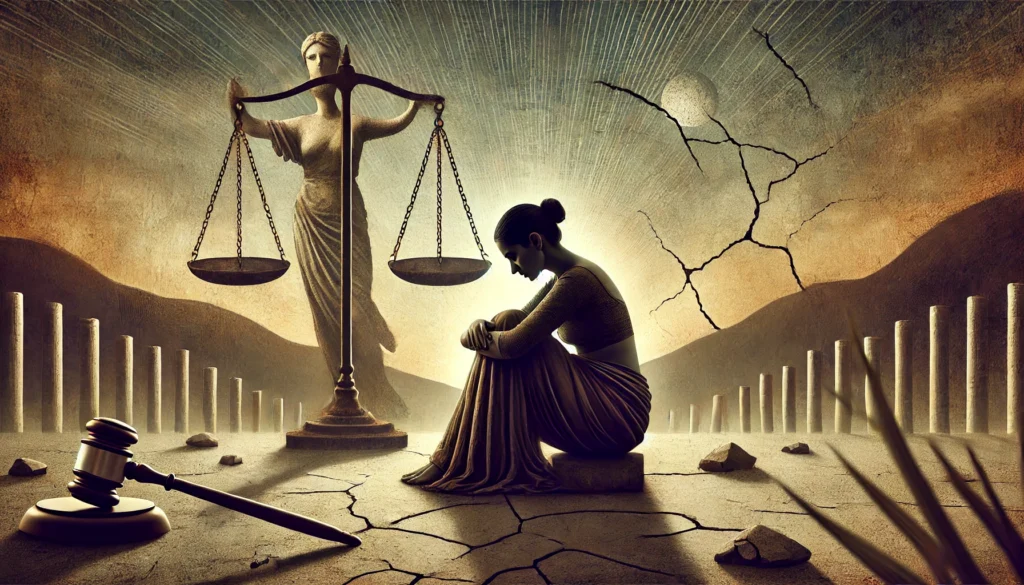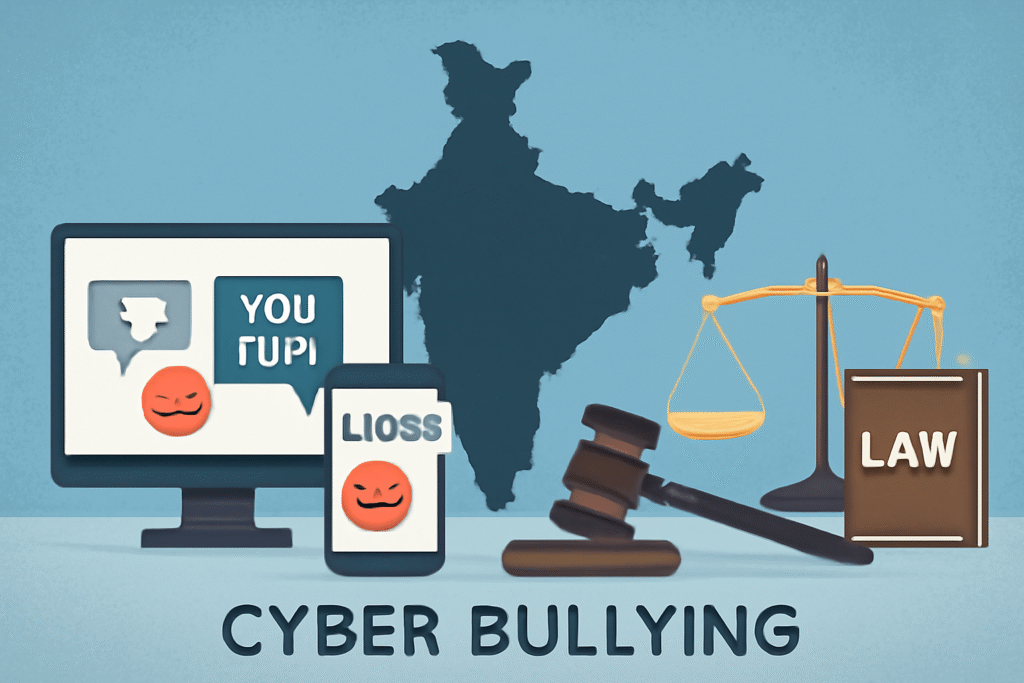Published on: 09th November 2025
Authored by: Sukanya Das
Binoda Law College, Kazi Nazrul University, Asansol, West Bengal
Citation: In Re: Article 370 Abrogation (2023) SC 1430[1]
Court: Supreme Court of India
Date of Judgment: December 11, 2023
Bench: 5-Judge Constitution Bench — Chief Justice D.Y. Chandrachud, Justices Sanjay Kishan Kaul, Sanjiv Khanna, B.R. Gavai, and Surya Kant
Background and Constitutional Context
Article 370 of the Indian Constitution was a temporary provision that accorded special status to the erstwhile state of Jammu and Kashmir (J&K). It allowed J&K to have its own Constitution and limited the applicability of the Indian Constitution to the state, requiring the concurrence of the state government for extending central laws to the state.[2]
The origin of Article 370 dates back to the Instrument of Accession signed in 1947 when J&K acceded to India after independence. The provision allowed the Constituent Assembly of J&K to recommend which parts of the Indian Constitution would apply to the state. Once the J&K Constituent Assembly dissolved in 1957 without recommending the abrogation of Article 370, the general understanding was that Article 370 became permanent.[3][4]
On August 5, 2019, the Union Government issued Presidential Order C.O. 272, applying all provisions of the Indian Constitution to J&K, effectively abrogating Article 370. A statutory resolution under Article 370(3) followed, recommending that Article 370 cease to exist. Additionally, the Jammu and Kashmir Reorganisation Act, 2019 bifurcated the state into two Union Territories: Jammu & Kashmir (with legislature) and Ladakh (without legislature).[5][6]
These actions were taken during President’s Rule under Article 356 in J&K, raising significant constitutional questions about federalism, executive power, and democratic legitimacy.[7][8]
Issues Before the Court
- Was Article 370 a permanent provision after the dissolution of the J&K Constituent Assembly?
- Was the use of the President’s Rule to recommend the abrogation of Article 370 valid and constitutionally permissible?
- Could the Parliament reorganize the state into two Union Territories under Article 3 of the Constitution?
- Did the abrogation violate the principles of federalism and democratic governance?
Arguments Presented
Petitioners’ Arguments:
- Article 370 was a permanent feature of the Constitution since the Constituent Assembly of J&K had dissolved in 1957 without recommending its abrogation.
- The Presidential Orders of 2019 (C.O. 272 and C.O. 273) were unconstitutional because they bypassed the consent of the state government.
- The Governor, during President’s Rule, could not act as a substitute for the state legislature or the Constituent Assembly.
- The conversion of J&K into Union Territories violated Article 3 and the federal structure of the Constitution.[9]
Respondents’ (Union of India) Arguments:
- Article 370 was always temporary and transitional in nature.[10][11]
- The President was empowered under Article 356 to take decisions in the absence of a functioning state government.[12][13]
- The concurrence of the Governor (acting on behalf of the President) was sufficient.[14]
- The reorganization was a legislative action, and Parliament has the authority under Article 3 to alter state boundaries and status.[15]
Supreme Court’s Analysis and Findings
- Temporary Nature of Article 370: The Court held that Article 370 was always meant to be temporary. The Court reasoned that the Constituent Assembly of J&K was not the sole authority to determine the abrogation of Article 370. Even though the Assembly dissolved in 1957, the President retained the power under Article 370(3) to declare it inoperative.[16][17]
- Presidential Powers under Article 370 and Article 356: The Court upheld the use of Presidential powers during President’s Rule. It concluded that the President could act in place of the state government when a state is under President’s Rule. Therefore, the recommendation for abrogation made under Article 370(3) was constitutionally valid.[18][19]
- Validity of the Presidential Orders C.O. 272 and 273: The Court found no illegality in the process. C.O. 272 amended Article 367 to reinterpret the term “Constituent Assembly” to mean the “Legislative Assembly” of J&K, and C.O. 273 used that reinterpretation to abrogate Article 370. While acknowledging the procedural innovation, the Court stated that the President acted within the scope of constitutional authority.[20][21]
- Reorganization into Union Territories: Although the Court did not delve deeply into the permanent status of Union Territories, it directed the Union Government to restore statehood to Jammu and Kashmir at the earliest and hold elections before September 30, 2024. The Court accepted the Parliament’s power to reorganize the state but emphasized that such actions must remain consistent with constitutional morality.[22][23]
- Democratic Deficit and Federalism: Justice Kaul, in a concurring opinion, underscored the importance of democratic values and participatory governance. He recommended the establishment of a Truth and Reconciliation Commission to examine human rights violations in J&K since the 1980s. While the majority upheld the constitutionality of the Centre’s actions, the Court acknowledged concerns about transparency and inclusivity.[24][25]
Judgment
In a unanimous decision, the 5-judge bench upheld the abrogation of Article 370. It concluded:
- Article 370 was a temporary provision and could be abrogated by the President.
- The President could exercise state legislative powers under President’s Rule.
- The reorganization of the state into Union Territories was constitutionally permissible.
- The Court directed the Union Government to restore statehood and conduct elections in J&K by September 30, 2024.[26][27]
Significance of the Judgment
- Constitutional Precedent: The ruling sets a powerful precedent on how temporary provisions in the Constitution can be interpreted and repealed. It affirms the supremacy of Parliament and the President in shaping federal relations.[28][29]
- Executive Power and President’s Rule: The case clarified the President’s wide authority during President’s Rule, potentially expanding the Centre’s influence over states in exceptional situations.[30][31]
- Federalism and State Autonomy: While the Court upheld the reorganization, it also indirectly signaled limits by requiring the restoration of statehood. This reveals a balancing act between centralization and federalism.[32][33]
- Impact on J&K Politics: The decision has long-term implications for the political status and governance of Jammu and Kashmir. It redefines the Centre-State dynamics and will influence future debates on autonomy and integration.[34][35]
- Critical Reactions: The judgment has attracted criticism from constitutional scholars, civil society, and regional political leaders. Critics argue that the Court overlooked the federal and democratic ethos of the Constitution by validating a unilateral central action.[36]
Conclusion
The In Re: Article 370 Abrogation case is a watershed moment in Indian constitutional law. It illustrates how the Supreme Court navigated complex constitutional and political terrain to arrive at a unanimous verdict. By declaring Article 370 to be temporary and upholding the President’s actions, the Court has reinforced the strength of the Union government within the federal framework. At the same time, the directive to restore democratic processes in J&K keeps alive the discourse on participatory governance. The judgment invites future discussions on constitutional morality, procedural justice, and the balance of power between the Centre and the States.
Bibliography and References
- Supreme Court Observer. “Abrogation of Article 370 | Judgement Summary.” https://www.scobserver.in/reports/abrogation-of-article-370-judgement-summary/
- Supreme Court Observer. “Challenge to the Abrogation of Article 370.” https://www.scobserver.in/cases/challenge-to-the-abrogation-of-article-370-case-background/
- Lawctopus. “The Supreme Court’s Decision on the Abrogation of Article 370: An In-depth Analysis.” https://www.lawctopus.com/academike/the-supreme-courts-decision-on-the-abrogation-of-article-370-an-in-depth-analysis/
- Al Jazeera. “What’s Article 370? What to Know About India Top Court Verdict on Kashmir.” https://www.aljazeera.com/news/2023/12/11/whats-article-370-what-to-know-about-india-top-court-verdict-on-kashmir
- Wikipedia. “Revocation of the Special Status of Jammu and Kashmir.” https://en.wikipedia.org/wiki/Revocation_of_the_special_status_of_Jammu_and_Kashmir
- Indian Constitutional Law and Philosophy (Gautam Bhatia). “Guest Post: The Supreme Court’s Article 370 Judgment – On the Constituent Power of Jammu and Kashmir.” https://indconlawphil.wordpress.com/2023/12/16/guest-post-the-supreme-courts-article-370-judgment-ii-on-the-constituent-power-of-jammu-and-kashmir/
[1] SCO, ‘Abrogation of Article 370 | Judgement Summary’ (11 December 2023) <https://www.scobserver.in/reports/abrogation-of-article-370-judgement-summary/> accessed 29 July 2025.
[2] SCO, ‘Challenge to the Abrogation of Article 370’ (2023) <https://www.scobserver.in/cases/challenge-to-the-abrogation-of-article-370-case-background/> accessed 29 July 2025.
[3] ibid.
[4] Ankit Lawctopus, ‘The Supreme Court’s Decision on the Abrogation of Article 370: An In-Depth Analysis’ (15 March 2025) <https://www.lawctopus.com/academike/the-supreme-courts-decision-on-the-abrogation-of-article-370-an-in-depth-analysis/> accessed 29 July 2025.
[5] ‘Al Jazeera. “What’s Article 370? What to Know About India Top Court Verdict on Kashmir.’ (11 December 2023) <https://www.aljazeera.com/news/2023/12/11/whats-article-370-what-to-know-about-india-top-court-verdict-on-kashmir> accessed 29 July 2025.
[6] SCO (n 1).
[7] ‘Revocation of the Special Status of Jammu and Kashmir’ <https://en.wikipedia.org/wiki/Revocation_of_the_special_status_of_Jammu_and_Kashmir> accessed 29 July 2025.
[8] SCO (n 1).
[9] Bhatia Gautam, ‘Indian Constitutional Law and Philosophy (Gautam Bhatia). “Guest Post: The Supreme Court’s Article 370 Judgment – On the Constituent Power of Jammu and Kashmir.”’ (16 December 2023) <https://indconlawphil.wordpress.com/2023/12/16/guest-post-the-supreme-courts-article-370-judgment-ii-on-the-constituent-power-of-jammu-and-kashmir/> accessed 29 July 2025.
[10] ‘Al Jazeera. “What’s Article 370? What to Know About India Top Court Verdict on Kashmir.’ (n 5).
[11] Ankit Lawctopus (n 4).
[12] ‘Revocation of the Special Status of Jammu and Kashmir’ (n 7).
[13] SCO (n 1).
[14] ‘Revocation of the Special Status of Jammu and Kashmir’ (n 7).
[15] ‘Al Jazeera. “What’s Article 370? What to Know About India Top Court Verdict on Kashmir.’ (n 5).
[16] SCO (n 2).
[17] SCO (n 1).
[18] Ankit Lawctopus (n 4).
[19] SCO (n 1).
[20] Ankit Lawctopus (n 4).
[21] SCO (n 1).
[22] ‘Al Jazeera. “What’s Article 370? What to Know About India Top Court Verdict on Kashmir.’ (n 5).
[23] SCO (n 1).
[24] Bhatia Gautam (n 9).
[25] SCO (n 1).
[26] ‘Al Jazeera. “What’s Article 370? What to Know About India Top Court Verdict on Kashmir.’ (n 5).
[27] SCO (n 1).
[28] SCO (n 2).
[29] SCO (n 1).
[30] Ankit Lawctopus (n 4).
[31] SCO (n 1).
[32] ‘Al Jazeera. “What’s Article 370? What to Know About India Top Court Verdict on Kashmir.’ (n 5).
[33] SCO (n 1).
[34] ‘Revocation of the Special Status of Jammu and Kashmir’ (n 7).
[35] SCO (n 1).
[36] Bhatia Gautam (n 9).



